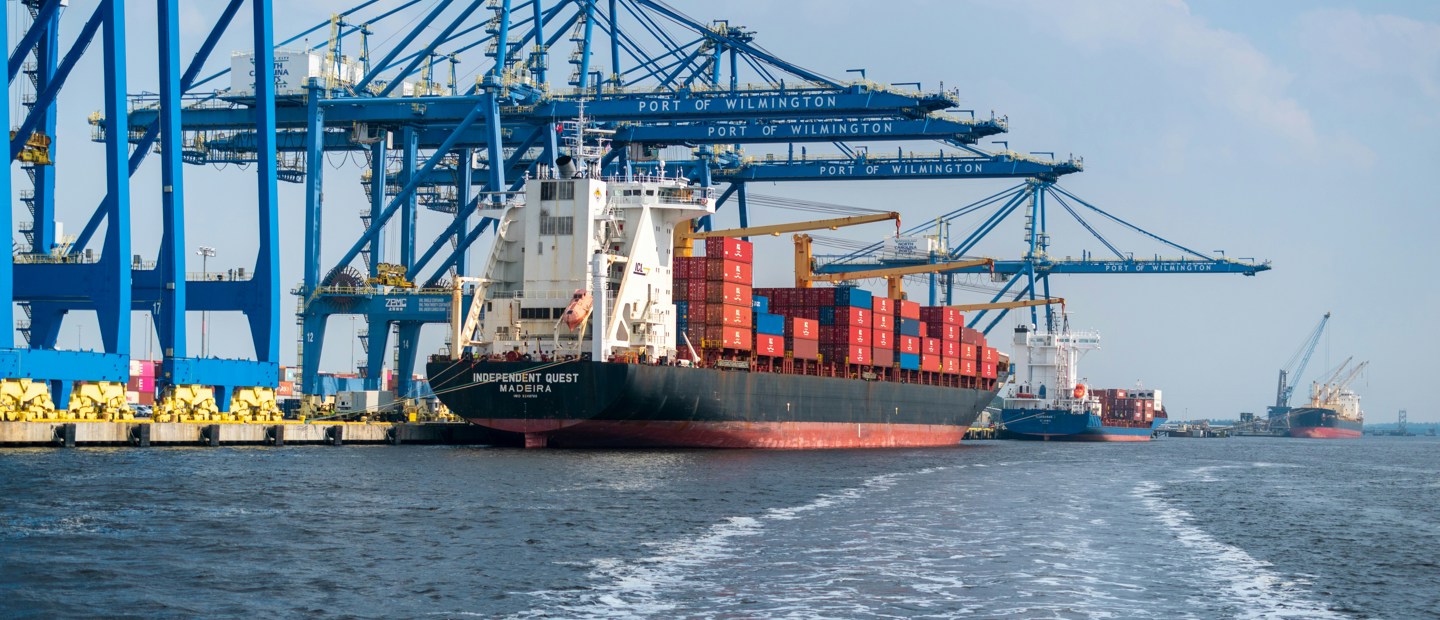
December 2024
Tariff-proof strategies: Elevating CPG negotiations
by James Kennerdale & Mike Kamins
 Back to insights
Back to insights
Concerned about the impact of incoming tariffs? Unlock the strategic negotiation playbook to navigate these challenging complexities with creativity and collaboration, empowering CPG companies to tackle obstacles head-on while remaining consumer-focused and competitive.
As U.S. tariffs loom, CPG companies and retailers face a crossroads: will they crumble under economic pressure or forge new partnerships through strategic negotiation?
In an environment shaped by uncertainty and economic pressure, strategic negotiation has become an indispensable skill for CPG companies and their retail partners. The impending implementation of U.S. tariffs presents both a challenge and an opportunity to traditional approaches to negotiation and collaboration. Businesses must shift away from transactional behaviors, avoid burdening consumers with increased costs and cultivate internal alignment to address the multifaceted impacts of tariffs.
The key to thriving in this environment lies in understanding how tariffs impact the macroeconomic climate and recognizing the importance of adaptability. Negotiation strategies must evolve to embrace creativity, collaboration, and mutual value creation. This requires businesses to critically assess their people, processes and organizational design, while developing a nuanced understanding of the relative importance of trading variables to both them and their partners.
The multifaceted impact of tariffs
Tariffs as economic instruments have far-reaching consequences for the CPG sector. They ripple through supply chains, influence pricing, disrupt consumer behavior and force companies to reexamine their strategic priorities. These effects create a complex environment that demands careful navigation.
Production costs and supply chain disruption
Tariffs on raw materials and components, such as aluminium, plastic and imported goods directly raise production costs. This impact is particularly pronounced in industries reliant on global supply chains. Packaging materials, a key element for many CPG products, become more expensive, squeezing margins and challenging profitability.
Moreover, tariffs introduce logistical complexities. Increased customs documentation, bureaucratic delays and tariff-related regulations can disrupt the timely flow of goods, impacting inventory levels and product availability. To mitigate these challenges, businesses may need to explore alternative sourcing options such as reshoring or nearshoring production, which require significant capital investment and long-term planning.
Impact on margins and consumer behavior
Passing increased costs onto consumers might seem like an immediate solution, but it is a strategy fraught with risks. Consumers are highly price-sensitive, especially for everyday essentials like food, beverages and cleaning supplies. Price increases can erode brand loyalty, prompting shoppers to switch to private-label or lower-cost alternatives.
In addition, rising prices often drive shifts in consumer behavior. Shoppers may prioritize value-driven purchases such as bulk buying or larger-sized products. For premium brands, these changes can be especially challenging as their higher price points may no longer align with evolving consumer preferences.
Innovation as a countermeasure
CPG companies are increasingly turning to innovation to offset tariff impacts. Reformulating products to reduce reliance on costly ingredients or using alternative packaging materials are strategies gaining traction. In some cases, businesses may pivot their product portfolios to focus on high-margin items or those less affected by tariffs.
Innovation also extends to supply chain optimization and technology adoption. Advanced analytics, automation and digital tools can help companies enhance efficiency, reduce costs and build resilience against external pressures.
Moving beyond transactional negotiations
The traditional approach to negotiation in the CPG sector has often been limited to collaboration within the scope of joint business planning with relationships moving to a more transactional focus the moment cost pressures are introduced. This mindset is insufficient to address the complex challenges posed by tariffs. Instead, companies must adopt a collaborative approach that emphasizes shared value and mutual benefit.
Internal alignment, a critical first step
Before engaging in external negotiations, businesses must ensure they are internally aligned. Misalignment, whether in strategic goals, communication or decision-making, can undermine negotiation efforts. Leadership teams must clearly articulate their priorities and cascade them throughout the organization, enabling a unified approach.
Processes should be scrutinized for their ability to support adaptability and creativity. For instance, are account managers empowered to explore unconventional solutions? Does the organization foster a culture that encourages innovation and experimentation? Without addressing these foundational elements, businesses will struggle to navigate external pressures effectively.
Understanding trading variables
Negotiation success hinges on understanding the relative importance of trading variables, both for your organization and your counterparties. Identifying and prioritizing these variables allows businesses to focus on areas of mutual interest and create win-win scenarios.
For example, a supplier may prioritize securing long-term contracts, while a retailer might value competitive pricing and consistent product availability. Recognizing these dynamics enables more productive negotiations and prevents discussions from devolving into deadlock.
Flexible negotiation strategies
In a tariff-driven environment, rigid negotiation strategies are unlikely to succeed. Businesses must prepare for contingencies, acknowledging that initial proposals may be rejected. Preplanned alternative strategies that emphasize value creation and shared growth can help maintain momentum and foster stronger relationships.
For example, retailers and suppliers might explore co-investments in marketing initiatives or joint efforts to optimize supply chains. These collaborative approaches not only address immediate challenges but also strengthen long-term partnerships.
Avoiding the consumer cost burden
While passing costs onto consumers may seem like the simplest response to rising expenses, it is not a sustainable solution. In an increasingly competitive and consumer-conscious market, businesses must explore alternatives that protect affordability and enhance brand loyalty.
This involves reevaluating operational efficiencies, leveraging technology to reduce costs and collaborating with partners to identify shared opportunities for value creation. For instance, a supplier might absorb a portion of the tariff impact in exchange for better shelf positioning or expanded distribution. Such arrangements require creativity and flexibility but can yield significant benefits for all stakeholders.
Collaboration as a competitive advantage
The challenges posed by tariffs underscore the importance of collaboration within the CPG sector. Retailers and suppliers must move beyond transactional interactions to develop joint strategies that address shared challenges.
Overcoming post-COVID disruptions
The COVID-19 pandemic transformed consumer behavior, accelerating the shift towards omnichannel retail and digital-first shopping. This transition required businesses to adapt quickly, often at the expense of collaboration. Inflationary pressures in subsequent years further strained retailer- supplier relationships, redirecting focus towards cost-management discussions.
Tariffs present an opportunity to reset these dynamics. By prioritizing collaboration, businesses can explore joint investments in technology, data sharing and supply chain optimization, creating shared value and enhancing resilience.
Leveraging technology and data
Technology and data play a pivotal role in fostering collaboration. Advanced analytics can provide insights into consumer behavior, cost structures and market trends, enabling more informed decision-making. Shared data platforms can enhance transparency, build trust and facilitate more productive negotiations.
For example, a supplier might use data to demonstrate how a pricing model benefits a retailer’s margin mix, strengthening their case for a partnership approach. Similarly, retailers can share sales data to help suppliers optimize their product offerings and align with consumer preferences.
Reshaping organizational design
Navigating a tariff-driven environment requires more than strategic adjustments. It demands a fundamental reassessment of how organizations operate. Companies must ensure their people, processes and structures are equipped to handle change and drive innovation.
Empowering people
Employees must be equipped with the skills and tools needed to navigate complex negotiations and foster collaboration. This includes training account managers to think creatively, communicate effectively and build relationships based on trust and mutual benefit.
Optimizing processes
Processes should be designed for agility and adaptability. Scenario planning, contingency modelling and cross-functional collaboration must become standard practices. These capabilities enable organizations to anticipate potential challenges and respond proactively.
Fostering collaboration
Organizational design must support collaboration at all levels. Breaking down silos, cultivating teamwork and creating structures that facilitate rapid decision-making are essential for navigating an increasingly complex environment.
Looking ahead
As the likelihood of U.S. tariffs increases, the CPG sector faces a crucial inflection point. Businesses must move beyond transactional approaches, prioritize collaboration and embrace innovation to navigate these challenges successfully.
By avoiding the short-term temptation to pass costs onto consumers, companies can protect their market positions and build stronger relationships with their partners. Success requires a cultural shift that emphasizes alignment, creativity and adaptability.
The companies that thrive will be those that approach negotiation not as a battle to be won but as a partnership to be nurtured. In a complex and dynamic market, this perspective will be the key to unlocking sustainable success. The Gap Partnership’s negotiation consulting, negotiation training and digital solutions are available to those seeking specialist support in these areas. The investment of time and resource in moving to a more strategic and collaborative playing field will pay dividends in elevating your CPG negotiations.
About the authors
Mike Kamins is an experienced negotiation strategist with responsibility for steering commercial solutions for organisations throughout the US, Latin America, Canada and the UK. As a partner in the business, Mike also has a particular focus on driving ROI across multiple sectors including CPG, retail, industrials and government.
James Kennerdale spearheads The Gap Partnership's commercial strategy for the Americas, bringing a wealth of experience across multiple sectors following a career spanning Europe, Middle East and currently New York. James is an associate of the Chartered Institute of Securities and Investments in London and holds a Law degree from the UK.

Subscribe to our newsletter
We’d love to send you our monthly round up of news, events and products.